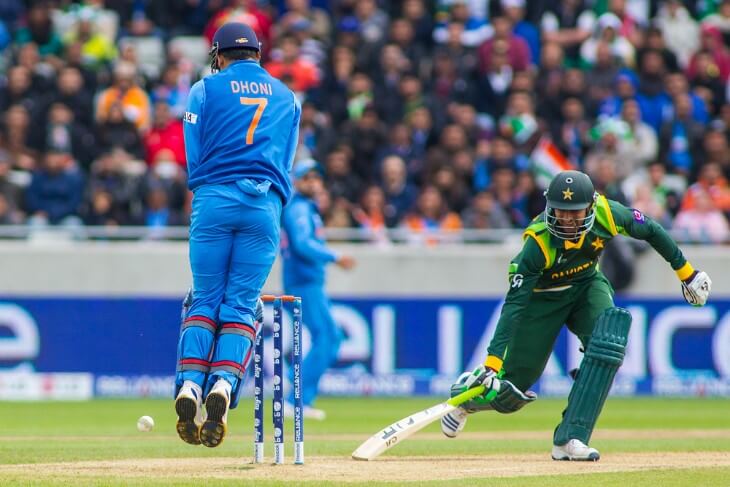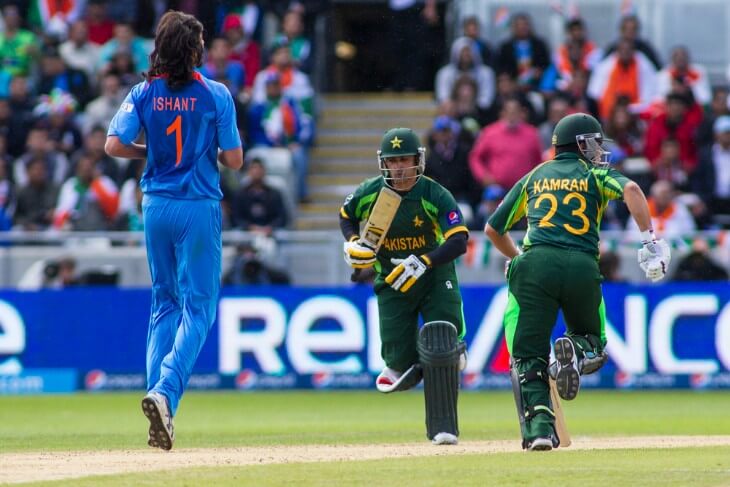Cricket is central to the United Kingdom's sporting heritage, representing a rich legacy of tradition and progress. The heart of this legacy is the country's domestic cricket teams, pivotal in nurturing talent and hosting iconic rivalries. The County Championship showcases endurance and skill, while the T20 Blast brings thrilling excitement and the Royal London One-Day Cup offers strategic gameplay. These leagues are the epitome of UK cricket excellence.
Historical Context of Domestic Cricket in the UK
Cricket's roots in the United Kingdom are traced back centuries, with documented evidence of its existence dating as far back as the 16th century. Initially, cricket was a pastime enjoyed by the aristocracy and was played primarily in rural communities. The sport gradually gained popularity and evolved into organized matches among local teams. The 18th century marked a significant turning point with the formation of the world's first cricket club, the Hambledon Club in Hampshire, in 1750. This marked the beginning of a more structured approach to the game, laying the foundation for formal rules and competitions.
The establishment of county cricket played a pivotal role in shaping the landscape of domestic cricket in the UK. The formation of the Marylebone Cricket Club (MCC) in 1787 further standardized the rules of the game, contributing to its widespread acceptance and popularity. However, it was the formation of the County Championship in 1890 that revolutionized domestic cricket. This competition, organized by the MCC, brought together county teams to compete at a higher level, leading to increased professionalism and interest in the sport. The County Championship became the pinnacle of domestic cricket, fostering intense rivalries among counties and showcasing exceptional talent.
Throughout its history, domestic cricket in the UK has witnessed several transformations in its format and structure. From the traditional longer formats of the game to the introduction of limited-overs cricket in the 1960s, the evolution has been instrumental in catering to different audiences and player skill sets. The expansion of T20 cricket, particularly with the inception of the T20 Blast, brought a dynamic and fast-paced dimension to domestic cricket, attracting larger crowds and new fans. These historical shifts reflect the adaptability and resilience of domestic cricket in meeting the changing demands of both players and spectators over time.
Overview of Major Domestic Cricket Competitions
I. County Championship
The County Championship stands as one of the oldest and most prestigious domestic cricket competitions globally. Established in 1890, it features first-class cricket played between 18 county teams. The tournament operates on a divisional system, with teams competing in two divisions based on their performance from the previous season. Matches are traditionally played over four days, emphasizing endurance, skill, and strategic prowess. This format allows players to showcase their proficiency in the longer format of the game, contributing to the development of Test match-ready cricketers. Over the years, the County Championship has been a breeding ground for top-tier talent, nurturing and refining players who eventually represent England on the international stage.

II. T20 Blast
The T20 Blast, introduced in 2003 as the Twenty20 Cup and later rebranded, revolutionized domestic cricket in the UK. This shorter and more explosive format of the game is played by the same 18 county teams. Matches are limited to 20 overs per side, fostering an environment where aggressive batting, inventive strategies, and quick thinking are paramount. The T20 Blast has garnered immense popularity among fans, drawing larger crowds to stadiums with its electrifying atmosphere and nail-biting finishes. It has also attracted international stars, enhancing its global appeal and providing an opportunity for young talents to rub shoulders with seasoned professionals.
III. Royal London One-Day Cup
The Royal London One-Day Cup, inaugurated in 2014, is the premier 50-over limited-overs competition in English domestic cricket. The tournament features all 18 county teams competing in a round-robin group stage followed by knockout matches leading to the final. Played over 50 overs per innings, this competition emphasizes a balance between aggressive batting and disciplined bowling. The Royal London One-Day Cup serves as a platform for players to showcase their adaptability across different formats and has often been a stepping stone for cricketers aspiring to excel in international one-day cricket. This tournament's structure allows for an engaging and competitive atmosphere, contributing significantly to the overall development of players in the domestic circuit.
Role of Domestic Cricket in Player Development
Domestic cricket in the UK plays a pivotal role in nurturing and honing cricketing talent, serving as a crucial stepping stone for players aspiring to represent their country at the international level. One of its primary roles lies in providing a competitive platform for players to refine their skills across various formats of the game. The County Championship, for instance, focuses on the longer format, instilling qualities like patience, endurance, and strategic thinking, crucial for excelling in Test cricket. This format allows players to develop techniques, temperament, and consistency, shaping them into well-rounded cricketers.
Moreover, domestic cricket acts as a talent pool from which national selectors scout and identify potential prospects for the national team. Exceptional performances in domestic leagues often serve as a launchpad for players to transition into international cricket. Players like Joe Root and Ben Stokes, who emerged through county cricket, are prime examples of how the domestic circuit serves as a breeding ground for future stars. The exposure and challenges faced in domestic competitions prepare players for the rigours of international cricket, allowing them to acclimatize to varying conditions and pressures, thus significantly contributing to their development as professionals.
Beyond skill development, domestic cricket also fosters leadership qualities and teamwork among players. Captaining a county team or being part of a squad entails managing different personalities, strategizing during matches, and handling pressure situations. These experiences not only enhance a player's cricketing abilities but also nurture qualities essential for leadership roles within the team. The competitive nature of domestic cricket fosters camaraderie and a strong team ethos, contributing to a player's holistic growth as an individual and as a team player.
Impact of Domestic Cricket on the UK Cricket Ecosystem
Domestic cricket in the UK significantly impacts the broader cricket ecosystem in multifaceted ways, extending its influence beyond the boundaries of the playing field. Here are key aspects of its impact:
Grassroots Development:
Domestic cricket serves as an inspiration and motivation for aspiring young cricketers. The visibility of county teams and their players in various competitions fosters a sense of pride and admiration among budding talents. Local leagues and cricket academies often look up to county teams as role models, encouraging young players to pursue the sport passionately. These domestic leagues provide a pathway for youngsters to envision a career in cricket and set their sights on playing for their country, creating a robust grassroots foundation for the sport's future.
Fan Engagement and Support:
The domestic cricket circuit, especially with tournaments like the T20 Blast, attracts diverse audiences, from seasoned cricket enthusiasts to families seeking entertainment. Matches held in iconic venues like Lord's Cricket Ground or Edgbaston not only draw crowds but also create a vibrant atmosphere, contributing to the sport's popularity. The passionate support for county teams strengthens regional identities and fosters a deep connection between fans and their local sides. This engagement with the local community bolsters the sense of belonging and loyalty, making cricket an integral part of the UK's cultural fabric.
Economic Significance:
The influence of domestic cricket extends to the economic realm, benefiting various stakeholders. Hosting matches generates revenue for host cities through ticket sales, merchandise, hospitality, and tourism. Additionally, the visibility of brands and sponsors associated with county teams and tournaments amplifies commercial opportunities, attracting investments that support the growth and sustainability of domestic cricket. Furthermore, the development of cricket infrastructure, including stadiums and training facilities, not only facilitates the sport's growth but also contributes to the local economy by creating job opportunities and supporting businesses associated with cricket.

Challenges and Future of Domestic Cricket in the UK
Challenges:
- Competing with Other Leagues: The domestic cricket calendar faces competition from various other cricket leagues worldwide, which can impact player availability and spectator engagement. Leagues like the Indian Premier League (IPL) attract international players, sometimes overlapping with the English domestic season, which might affect the participation of key players in UK leagues.
- Financial Sustainability: Ensuring the financial stability of domestic cricket remains a concern. While certain tournaments like the T20 Blast draw crowds, smaller fixtures might struggle to attract substantial audiences, impacting revenues. Achieving a balance between commercial viability and the sport's traditional values is a constant challenge.
- Player Workload Management: With a packed cricketing calendar involving multiple formats and tournaments, managing player workload becomes crucial. Juggling international commitments along with domestic fixtures poses challenges for players, potentially leading to fatigue and injury concerns.
Future Prospects:
- Innovations and Formats: Exploring innovative formats and scheduling could inject renewed excitement into domestic cricket. The Hundred, introduced recently, showcases an abbreviated format aimed at attracting newer audiences. Continual evolution in formats and tournament structures could enhance the appeal and sustainability of domestic leagues.
- Enhanced Broadcasting and Digital Reach: Leveraging technology for better broadcasting and engaging fans through digital platforms presents a significant opportunity. Improved access to matches through streaming services and interactive content could expand the viewer base and increase fan engagement.
- Youth Development and Pathways: Investing in grassroots cricket and refining pathways for young talent remains pivotal. Developing robust youth systems and providing opportunities for talented youngsters to progress into domestic setups can ensure a continuous supply of skilled players, nurturing the future of English cricket.
- Sustainable Growth and Infrastructure: Fostering sustainable growth by investing in infrastructure, including modernizing facilities and stadiums, can elevate the overall quality of domestic cricket. Additionally, developing stronger ties between domestic teams and local communities can help in building enduring fan bases.
Summary
UK domestic cricket is a rich blend of tradition, talent, and community, forming a crucial part of the nation's cricket scene. Rooted in county cricket's history and evolving through modern tournaments like the T20 Blast and the Royal London One-Day Cup, these leagues have developed players and engaged fans for many years.
However, there are challenges ahead, including balancing tradition with modernity, managing player workloads, and ensuring financial stability. Yet, the future looks bright for UK domestic cricket. Opportunities lie in embracing tech innovations, fostering grassroots talent, and strengthening community connections, paving the way for sustainable growth and broader appeal.
Domestic cricket is more than a set of matches; it's a hub for developing talent, a symbol of regional identity, and a key component of local communities. Its continued evolution will depend on its capacity to adapt and innovate, maintaining the passion that has made cricket a staple of the UK's sports culture.
For more information:


